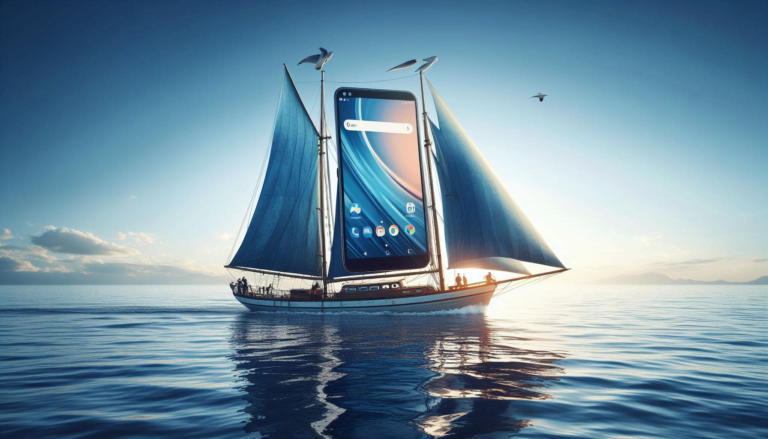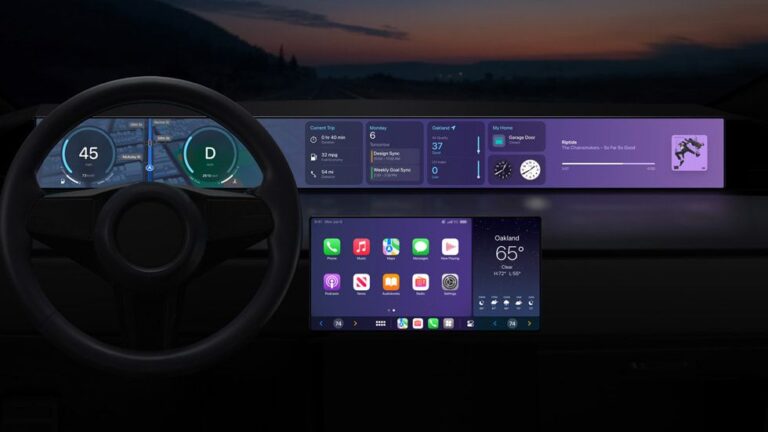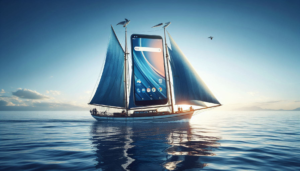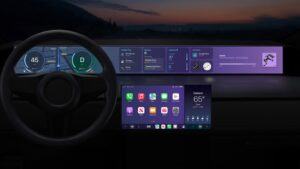Apple is a bit closer to a killer use case.
- The latest data from Apple’s study with Stanford University is encouraging and I think represents a step closer towards a killer use case for wearables as well as a complete disruption for the medical devices industry.
- In November 2017, Apple and Stanford ran a study of 400,000 users of the Apple Watch 3 to ascertain just how good the device is at detecting abnormalities that are a sign of a serious health problem.
- The study focused on atrial fibrillation which is the irregular beating of the heart that in many cases has no perceptible symptoms.
- However, it is an indicator of major problems such as stroke, heart failure and dementia which in many cases are life changing or fatal.
- The idea is to use asymptomatic atrial fibrillation to prevent these catastrophic and hugely expensive outcomes.
- The data from the study is quite encouraging:
- First, false positives: During the study, 0.5% of the participants received notifications from their devices.
- Without knowing the age range of the participants (occurrence increases substantially with age), it is impossible to determine how close this is to reality, but importantly it is in the ball-park.
- In the developed world, 2-3% of the population will experience atrial fibrillation but the distribution is large with only 0.14% of the population below 49 being affected, going as high as 13% in people aged over 80.
- This is important because false positives could cause a lot of undue stress as well as an unnecessary strain on the health system.
- Second, good correlation: The Apple watch indications of atrial fibrillation were found to be 71% accurate when immediately followed up with an electrocardiogram.
- Furthermore, the Apple watch was found to be 84% accurate in detecting atrial fibrillation when the user was being simultaneously monitored with the watch and an ECG.
- Third, the intermittent nature: of this condition was made very clear as only 34% of those that followed up with an ECG a week later were found to have the condition at that time.
- This underlines the importance of continuous monitoring, which historically has been prohibitively expensive and completely impractical.
- While the Apple watch is clearly not close to being medical grade, the accuracy of 84% is an excellent first step towards improving the detection of medical conditions are best diagnosed with continual monitoring.
- Atrial fibrillation is the easiest to monitor with blood pressure and blood glucose also offering huge potential markets.
- This is because high blood pressure is suffered by up to third of a developed market population with only around half of them being aware of it and seeking treatment.
- Both high blood pressure and diabetes are conditions best treated with continuous monitoring as well as lifestyle changes.
- Medical grade equipment is extremely expensive and bulky meaning that it is not well suited to continuous monitoring.
- This is why I have long believed that a killer user-case for wearables is for them to be able to continually monitor these conditions at a medical grade for a fraction of the cost.
- There is also a substantial financial incentive as 70% of all medical conditions are thought to be lifestyle related, the prevention of which would substantially reduce the burden being placed on creaky state health systems.
- This is a good result for Apple and creates a greater incentive for users to continue paying premium prices for Apple products as there are tangible benefits to be had even at this early stage.
- In this space, I am also keeping an eye on Valencell (blood pressure in earbuds), Lehman Medical devices (blood pressure test in a smartphone) and LifePlus (blood glucose in a smartwatch).
- There still remains a very long way to go in terms of accuracy but critically I think this will be achieved through software rather than hardware.
- The medical device industry is not in danger yet, but the writing is on the wall.










Blog Comments
Donald N
March 19, 2019 at 12:41 pm
See the other health apps Apple are partnered with, Dexcom (glucose levels), Qardio (blood pressure) and Snoww (fitness). Apple rumored to be acquiring Dexcom in the near future so more to come.
RICHARD WINDSOR
March 19, 2019 at 2:49 pm
The issue with Dexcom and Qardio is that neither of them are un-invasive. This makes the user experience poor and makes continuous monitoring more challenging…. These solutions are not what I am looking for to move this segment forward….
Tim Nash
March 19, 2019 at 2:42 pm
‘There still remains a very long way to go in terms of accuracy but critically I think this will be achieved through software rather than hardware.’
When new AirPods arrive, with sensors, accuracy should improve with the additional monitoring point(s). AirPod sensors could also help with other conditions such as glucose monitoring.
This could lead to a new virtuous cycle of publicity and sales of Watch/AirPods – large medical study with top research institutions announced, articles on grateful people diagnosed with previously unknown condition, results of study widely publicised.
As Tim Cook is making health an Apple priority and retail cost of 3 Watch/AirPods together is approx. 2 iPhones this could cover much, if not all, of the reduction in revenue from lower iPhone sales.
RICHARD WINDSOR
March 19, 2019 at 2:51 pm
Agree on airpods… the ear is a great place for monitoring and blood pressure is something that can be solved this way. Blood pressure doesent work on the wrist though which is an issue. problem here is of course is that poeple dont wear headphnes all the time… better than a cuff tho.
Josh S
March 19, 2019 at 4:09 pm
For wearables to significantly affect health outcomes they will not only need to be able to diagnose conditions like afib, but also distinguish cases where treatment will be beneficial or neutral vs cases in which treatment is harmful. If not there is a good chance that constant monitoring could end up like cancer screening – a decidedly mixed bag. The good news is this shouldn’t be impossible given the amount of data that will be available and, based on past medical adoption, it is unlikely that practitioners will wait for evidence of net benefit anyways.
RICHARD WINDSOR
March 21, 2019 at 3:04 pm
Yes agree…. accuracy of the sensor or improvement in software interpretation of signal is what is really needed
Ken Blakeslee
March 20, 2019 at 3:03 pm
This whole area of constant monitoring and data analysis (with AI applied) is an area of huge opportunity and potential change for finally addressing wellness and preemptive healthcare, especially when linked to the fact that most (70%?) can be lifestyle corrected or prevented.
Plus early warning of a developing condition that can be mitigated or cured before a “consumer” even becomes a “patient”!
Unconscious monitoring and data gathering can now happen in places where the location “real estate” already exists and is occupied, and additional sensing can take place. The wrist and this extra software feature added by Apple to existing watches (thanks partly to AliveCor) is a good example.
Other normally occupied “real estate” examples and unconscious sensing possibilities are:
* The ear – hearing aids and ear buds can collect most vital signs
* The bathroom – Toothbrush = Saliva and sometimes blood; toilet = Urine and feces, bathroom scale = Weight, fat/water/muscle mass and now heart rate and possibly PWV in future (e.g. with the Withings Body Cardio scale)
* The car – drowsiness, attention, etc.
* The home – many, e.g. home installed inactivity and fall detection to only mention a few.
* The desk chair – posture, inactivity, sitting too long
* And the list goes on.
This story will unfold almost organically due to tech enablement in the consumer centric “real estate” areas that creates awareness that drives wellness. Unconscious data gathering plus AI is key in my opinion, But this is where privacy is of utmost importance, and a source of potential end user friction.
This story will unfold almost organically due to tech enablement in these consumer centric “occupied real estate” areas that creates awareness that drives wellness. Unconscious data gathering is key in my opinion and could result in databases that could have AI applied and be looked at to see if there were early signs of unexpected condition.
But this is where privacy is of utmost importance, and a source of potential end user friction.
Blockchain is a possible enabler of personal privacy, but this is also why the Tim Berners-Lee enactment of Web enabled, secure personal data “pods” is so important as described in this article.
https://www.wired.co.uk/article/inrupt-tim-berners-lee
Avoiding the debate about if and when NHS can be improved or “fixed”, are there any UK Government initiatives to promote and cause over time this kind of wellness and preemptive healthcare? The savings in UK cost of healthcare and to businesses could be substantial and also to human lifestyle improvements.
RICHARD WINDSOR
March 21, 2019 at 3:05 pm
Thanks Ken… totally agree will have a look at the wired article… many thanks
Ken Blakeslee
March 22, 2019 at 2:49 pm
Here’s a bit of “Real Estate” that we all occupy regularly that can be turned into a Wellness and Preemptive Healthcare Asset in your home. Habitually used every day!
The toilet seat that could save millions of lives: New gadget can detect early signs of heart failure by picking up blood pressure, oxygen levels and heart rate
* The gadget fits over the top of a normal toilet seat and measures heartbeat
* It can also sense blood pressure and levels of oxygen in the blood
* Developers said it could save the lives of potential heart disease victims
* The technology could spot signs of heart trouble before symptoms are noticed
https://www.dropbox.com/s/2vwcuqeetajw6qt/Nortel%27s%20Orbitor%3A%20The%20iPhone%20Killer%20that%20was%20a%20Decade%20Early.pdf?dl=0
Ken Blakeslee
March 22, 2019 at 9:22 pm
Sorry, wrong link. I was doing something else and Cut & Paste buffer had the wrong link in it
Can you change the link to:
https://www.dailymail.co.uk/health/article-6835549/The-toilet-seat-save-millions-lives-detecting-heart-failure.html
An interesting article…